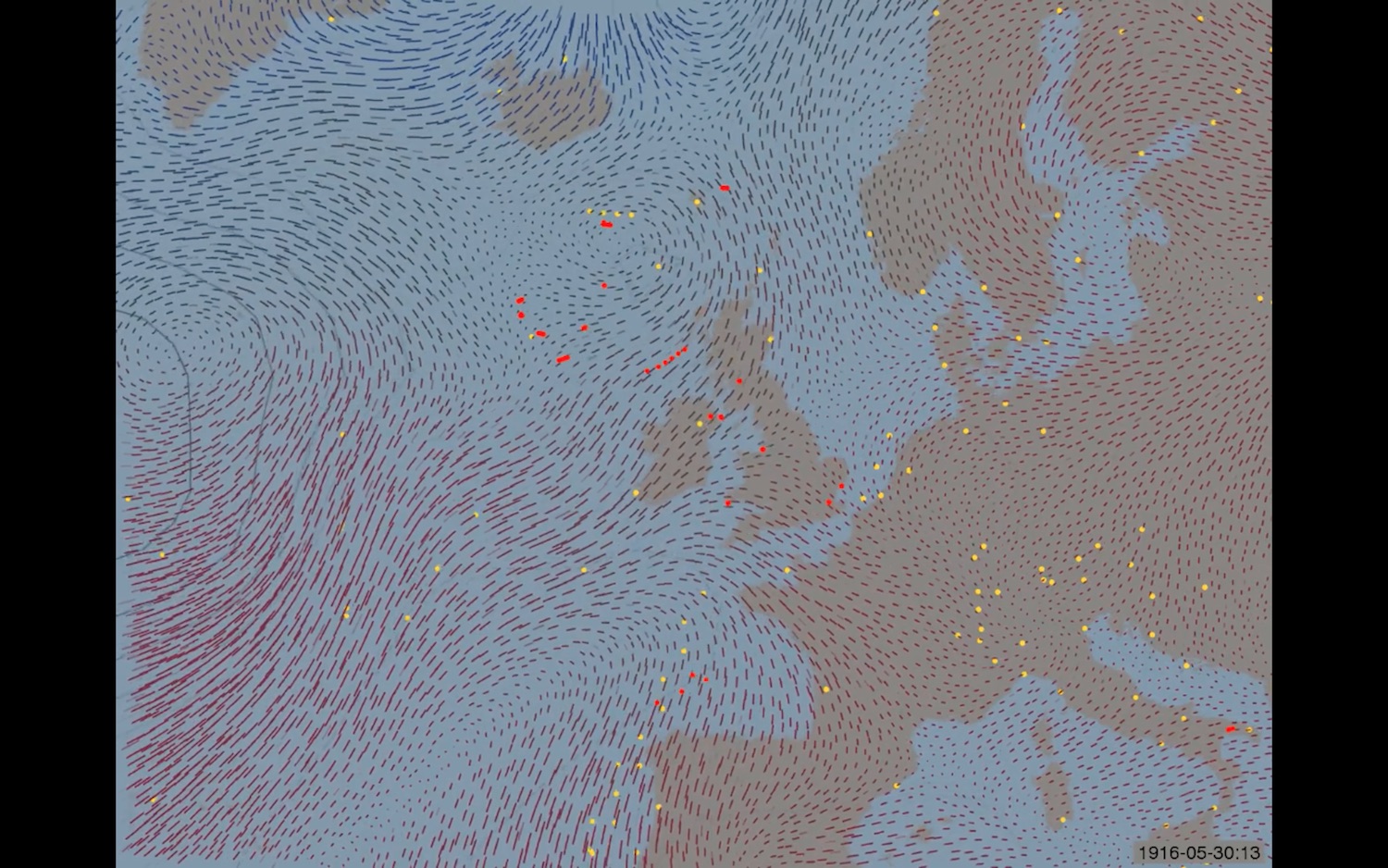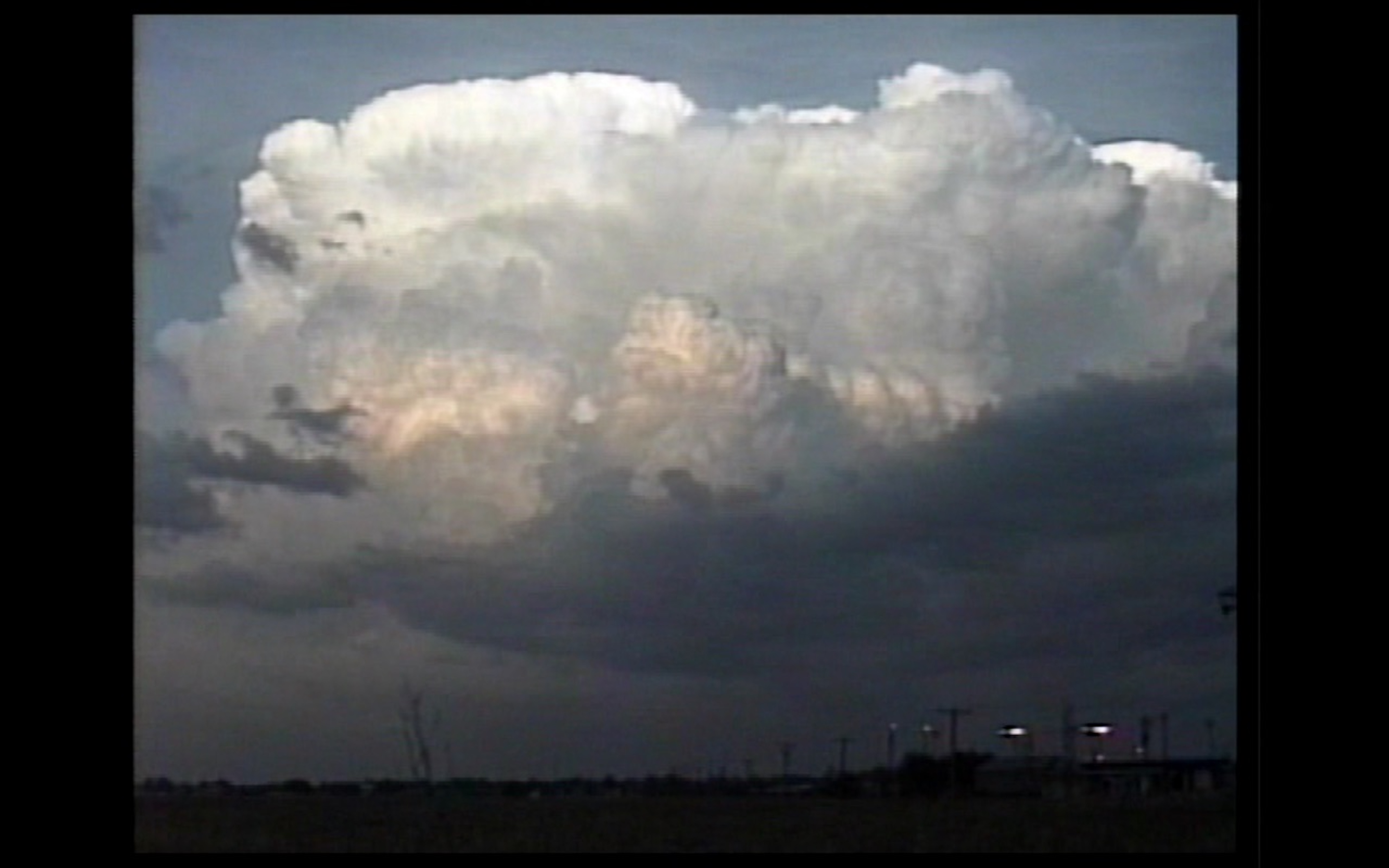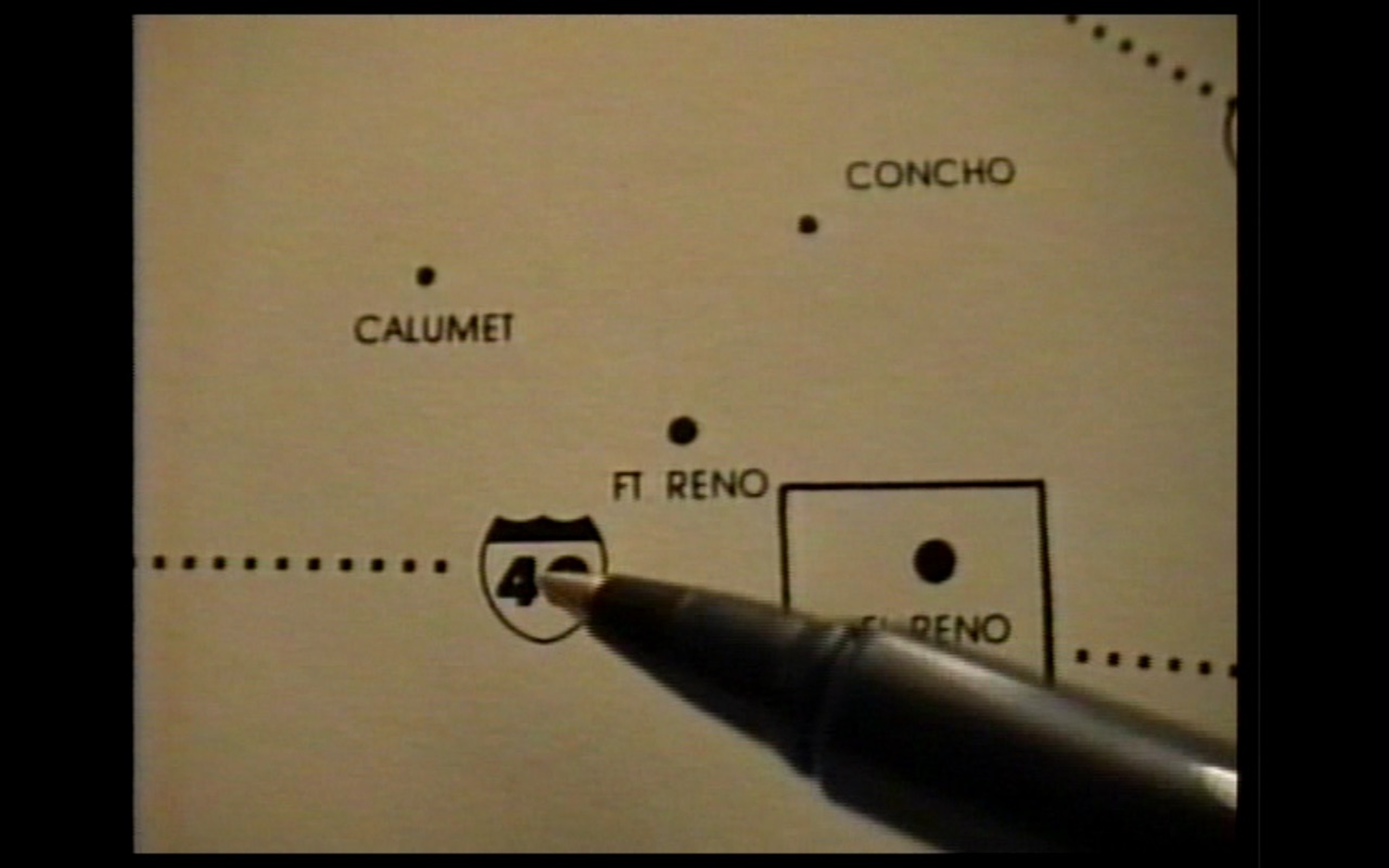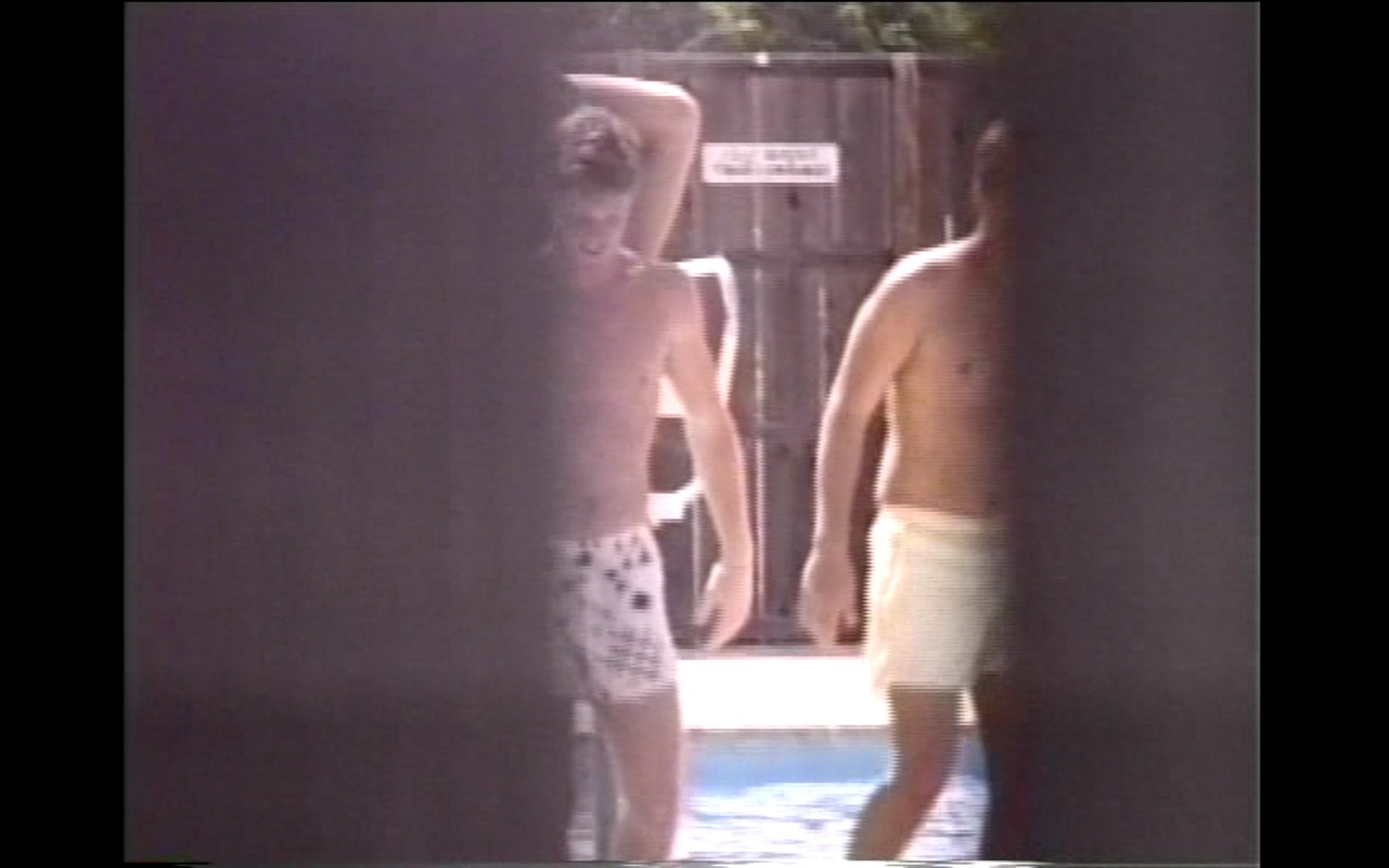Weather Diaries: Storm Squatting in the Anthropocene
 Thursday, June 7, 2018 at 3:54PM
Thursday, June 7, 2018 at 3:54PM Graig Uhlin
[ PDF Version ]
In Shipwreck Modernity, Steve Mentz contrasts two models of historical change. The first—theft—presents a familiar narrative about the event as a rupture with the past, an interruption of the new that constitutes a clear break from what precedes it. In its place, Mentz offers the “ecological metaphor” of composture, which recognizes the persistence of the past in the present moment as a type of sedimentation or accumulation: “multiple presences in multiple states of decay at all times.” [1]
Shipwreck is the name that Mentz gives to this temporal multiplicity; the shipwreck is a disordering event, one that upsets the neatly layered sedimentation of history via its immersion in the turbulence of the ocean. Replacing “terrestrial metaphors with oceanic ones,” Mentz contends, allows one to gain purchase on the copresence of different pasts in the composted whole. [2] In foregrounding the entanglement of human history and natural history, the perspective offered by the concept of the Anthropocene makes visible these literal and metaphorical shipwrecks, either revealing those that have already occurred or producing new ones. The experience of the Anthropocene is dislocating—not only on account of the forced displacement of climate change refugees, but also because of the geophysical unsettling of the earth itself. It is also disorienting in its collision of vastly different time scales, as human actions effect change on a planetary scale while stable geological and climatological periods are “set in motion,” as it were, accelerated and compressed to the level of the everyday.This essay considers two “shipwrecks”—one actual and historical, the other metaphorical and personal—in order to emphasize different approaches to mediating the Anthropocene’s conjuncture of the human and the climatological. Both take the form of a weather diary, involving the documentation and recording of climate phenomena, even as that information is used to radically different ends. The first involves logbooks recovered from the 1879 expedition of the USS Jeannette, wrecked on its journey to the North Pole. Ice floes trapped the ship, stranding its thirty-three-member crew for two years as they waited for the ice to recede or for a passable route to open. Instead, the ice advanced, crushing and sinking the ship, forcing its crew to trek on foot toward rescue. Only thirteen returned safely. The logbooks include the dutifully taken record of the weather patterns observed from their stalled position on the ice. These logbooks provide an invaluable resource to climate scientists seeking to reconstruct historical weather patterns that might serve as a baseline for evaluating the atypical extreme weather events characteristic of a changing climate.
This essay contrasts this historical weather diary to a decidedly different one, that of underground filmmaker George Kuchar’s highly personal videographic account of his summers in El Reno, Oklahoma, primarily in the 1980s. Otherwise best known for the campy, low-budget Hollywood send-ups he made with his brother Mike, Kuchar recorded these tapes, known as the Weather Diaries, while vacationing in a rundown motel during his summer breaks from the San Francisco Art Institute. Natural disasters like tornadoes are a regular feature of the Oklahoma landscape, and Kuchar was drawn to this extreme weather. The tapes exhibit this fascination with, and even desire for, the disordering force of the tornado. But Kuchar resists the heroic form of masculinity that seeks out and attempts to master such spectacular events, exemplified by storm chasing. Instead, Kuchar calls his actions “storm squatting,” describing his mediated representation of weather events from a stationary position. This concept applies equally to the logbooks of the shipwrecked crew.
This juxtaposition of the USS Jeannette logbooks and Kuchar’s videotapes calls attention to different modes of apprehension of and engagement with large-scale weather phenomena, involving two relationships between the human and the nonhuman. While Mentz argues that the “human response” to the ecological disaster of shipwreck is narrative (“narrat[ing] catastrophe in order to endure catastrophe”[3]
), these mediations of natural environments offer other procedures of sense-making: the first, a collective documentation of weather phenomena that emphasizes their normal patterns, making them useful for subsequent climate models, and the second, an individualized and highly contingent recording of aberrant weather events, a queer account of the anticipation of disaster and its failure to arrive.The USS Jeannette logbooks are part of a crowdsourced project called Old Weather, which mobilizes ordinary citizens to transcribe the information contained in the recovered logbooks from nineteenth- and early twentieth-century ships.[4]
These ship logs provide the most comprehensive data sources for historical weather prior to the development of satellite monitoring, but the particularities of handwriting make them unreadable for machines. Human transcription is therefore necessary. Amateur citizens, as opposed to professional scientists, are recruited via the Zooniverse platform, which organizes volunteers for culling research data, and multiple readers are assigned to each logbook in order to avoid mistakes in transcription. In one Old Weather project, the accumulated data allowed researchers to reconstruct the weather patterns during the Battle of Jutland, a World War I naval battle between British and German forces. The project combined weather reporting from ship logs with weather station data to produce a visualization of the conditions on the water, which, for instance, prevented air cover for the fleets in action due to strong winds. 
Figure 1: Weather conditions during the Battle of Jutland
The logbooks themselves were recovered on account of Arctic melting, highlighting one of the ways that the temporal multiplicity of the Anthropocene calls forth lost histories and exposes buried pasts. While Mentz’s account draws attention to the disordering that results from the ship’s sinking, I argue that this upheaval also characterizes the opposing movement of surfacing. What was lost or hidden, rendered inert and inaccessible by the long passage of time, has suddenly become active and present. As climate change continues to unsettle familiar geographies and oceanographies, what was once considered to be a static (or imperceptibly slow) background is now mobilized, enabling its capture by representational media. Surfacing can happen quickly, as with the sudden appearance of mysterious holes in Siberia caused by the explosive release of methane previously contained by permafrost. Or the surfacing can be gradual, as with the discovery of a preserved woolly mammoth carcass in the Siberian tundra, which scientists hope to sample for the de-extinction of the prehistoric mammal.[5]
All of this upended sediment of a composted history provides a record of the entanglement of the human and nonhuman, makes visible the simultaneity of human time and deep time, and invites aesthetic mediations to render those entanglements legible.Offering one such strategy, the modeling of the Battle of Jutland data and the USS Jeannette logs involves acts of “weather reconstruction,” as the Old Weather website refers to it. The historical data, once recovered and organized, provide dynamic representations of weather patterns, much like ice core samples allow scientists to create a measure of atmospheric carbon across millennia. However, the relevance of this data is not just scientific. As aesthetic mediations of accumulated data sets, the resulting map projections represent the distributed intelligence of the crowd. These reconstructions are a collectivized response to climate change. Perhaps necessarily then, the weather visualizations are presented from above, assuming an authoritative and vertical position above the event. The scale of the event, moreover, stretches across vast geographical distances and spans relatively extended time periods (two years in the case of the Jeannette), and thus constitutes a depersonalized and data-intensive moving image that aims to meet the challenge of climate’s depictability. The logbook is a bureaucratic account by an institutionalized system (military or corporate seafaring), and it functions as part of a societal effort to keep weather records that render analyzable and predictable the contingent nature of rain and wind. From massive data sets, the aim is to pull regularized patterns from random occurrences, though from the perspective of the Anthropocene, the focus shifts from normalcy to aberrance: climate scientists today want to measure the extremity of contemporary weather events against the baseline of this historical data. Though nothing seems less useful than yesterday’s weather report—as Walter Benjamin emphasized in contrasting the disposability of information to the durability of story—in the Anthropocene, this data brings the perspective of deep time to bear on the everyday.[6]
Yesterday’s weather report becomes relevant again. Kuchar’s mediation of weather events contrasts with Old Weather’s authoritative and visual overview. The Weather Diaries tapes—I focus on two of them, >Weather Diary 3 (1988) and Weather Diary 6 (1990)—are distinct from that historical project’s reconstruction of weather phenomena into a composite picture. The diaries are personal and playful. Through cunning editing and sound overlays that lean toward punning associations and ironic counterpoint, Kuchar displays his desires, anxieties, and boredom as he documents his bodily needs (hunger, digestion, lust), the people he meets in a small Oklahoma town, and the expanse of sky outside. Kuchar’s diligent attention to the weather from his self-imposed isolation in his motel room remains decidedly partial: spied from a window, or viewed on a television, or missed entirely. 
Figure 2: Storm clouds in Weather Diary 6
While Old Weather utilizes maps to visualize the information extracted from crowdsourced data, Kuchar’s tapes make reference to maps (often as satellite or printed images of Oklahoma) only when the filmmaker marks his own position on them, grounding the point of view by localizing it.

Figure 3: Locating the tornado in Weather Diary 6
This personalized inflection of the satellite’s global gaze answers Lisa Parks’s call to “situate satellite practices within material conditions on the earth as well as serve as a playful detournement of global positioning practices.”[7]
Through these strategies, Kuchar emphasizes the phenomenological experience of weather rather than scientific observation. Moreover, what preoccupies him is not the disastrous event itself—whatever tornadoes appear in these two tapes happen in neighboring towns and are seen only on television—but the anticipation of it. Indeed, much of the weather that Kuchar records directly remains mundane and uneventful in contrast to the dramatic spectacle of the television broadcasts and newspaper headlines that we are shown. Whereas the television aims to keep the destructive tornado in frame, Kuchar’s handheld camera—its roving frame underlining the filmmaker’s presence—deflects from the spectacular event in favor of the buildup toward it or, just as often, in favor of nothing happening.This play between the anticipation of natural disaster and the disappointment of nothing happening resembles a scenario of thwarted sexual desire, speaking to the queer inflection of Kuchar’s relation to the environment that his tapes offer. The weather takes on significance exceeding its status as natural phenomenon, as Kuchar’s tapes repeatedly link his psychological and physiological interiority with his exterior surroundings in one enveloping, affectively charged atmosphere. In Weather Diary 3, Kuchar presents himself as a lusty older man isolated within his small hotel room. In a direct address to the camera, he says “hot,” first referring to the outdoor heat. Moments later, Kuchar spies on young men horseplaying poolside through the slats of a fence before returning to his room to masturbate in the shower; “hot” now indexes his sexual desire.

Figure 4: Kuchar feels the heat in Weather Diary 3

Figure 5: Spying on young men poolside
During the masturbation scene, successive shots depict the falling water of the shower, reminding the viewer of rainfall. In each instance, Kuchar conflates his internal experiences with external phenomena, and it is difficult to determine which affects which. Even the notion of storm squatting takes on connotations of frustrated sexual desire: Kuchar befriends a young meteorology student visiting Oklahoma in order to chase storms, but Kuchar’s affection for him leads nowhere, nor do any storms appear. This leaves Kuchar, as he says, “starved for weather.”
Weather Diary 6 explores these associations in more depth. This tape is structured around the imminent arrival of a romantic partner from San Francisco. The anticipation of this arrival is metaphorically linked to the threat of a tornado descending on El Reno. For instance, Kuchar provides a close-up of a postcard listing Native American symbols that associates rain clouds with “good prospects,” followed by a brief montage of storm clouds. This association is re-established when Kuchar cuts from the student’s letter indicating his 28 May arrival date to a TV weather broadcast announcing a severe thunderstorm warning on 18 May. The queering of natural disaster entails Kuchar’s desire for the disordering force of the tornado, his solicitation of the extreme, aberrant event for its breaking of the tedium that otherwise characterizes his weather-watching. The exterior world appears to respond to the inner turmoil of the filmmaker, suggesting an entanglement of the human and the nonhuman that, while highly personalized, nonetheless expresses the mutual responsiveness that defines the Anthropocene. This responsiveness is as much affective as it is a matter of geophysics. A “shipwreck” brings these embedded relations into view, and the two instances discussed here offer different strategies for making these relations sensible and legible.
Notes
[1]Steve Mentz, Shipwreck Modernity: Ecologies of Globalization, 1550–1719 (Minneapolis: University of Minnesota Press, 2015), x.
[2]Steve Mentz, Ibid., xi.
[3]Steve Mentz, Ibid., xxv.
[4] See oldweather.org. See also Jenni Gritters, “A Century-Old Arctic Shipwreck Could Help Us Predict Extreme Weather,” FiveThirtyEight, 28 March 2017, fivethirtyeight.com/features/a-century-old-arctic-shipwreck-could-help-us-predict-extreme-weather/.
[5] Tia Ghose, “Fresh Mammoth Carcass from Siberia Holds Many Secrets,” Scientific American, 17 November 2014, www.scientificamerican.com/article/fresh-mammoth-carcass-from-siberia-holds-many-secrets/.
[6] Walter Benjamin, “The Storyteller: Reflections on the Work of Nikolai Leskov,” in Illuminations: Essays and Reflections, ed. Hannah Arendt (New York: Harcourt Brace Jovanovich, Inc., 1968).
[7] Lisa Parks, Cultures in Orbit: Satellites and the Televisual (Durham: Duke University Press, 2005), 15.
Graig Uhlin is an assistant professor of Screen Studies at Oklahoma State University. His scholarship has appeared in Cinema Journal, Games & Culture, Quarterly Review of Film & Video, Spectator, and other journals and edited collections. His research focuses on cinematic modernism and environmental aesthetics.
Reader Comments